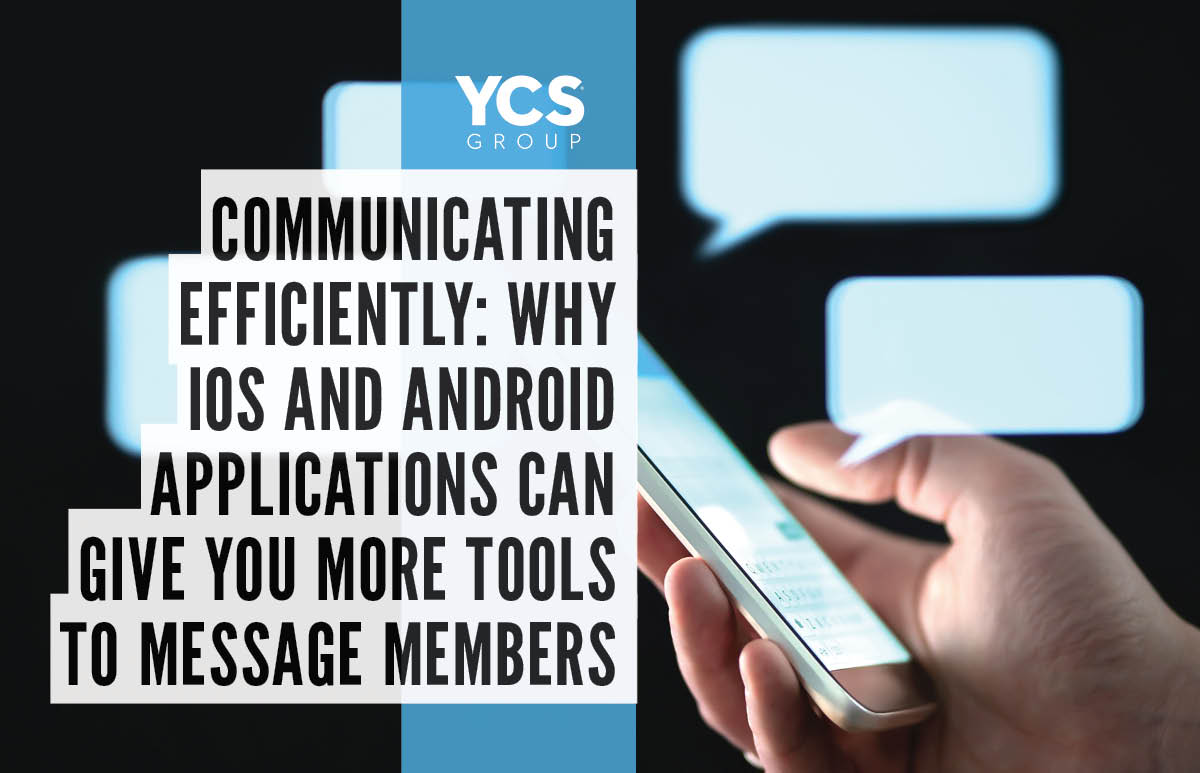
Communicating Efficiently, Why iOS and Android Applications Can Give You More Tools to Message Members
Have you ever wondered why messaging members can be more efficient when using iOS or Android applications? These platforms offer a range of tools that can enhance the messaging experience and make it more effective. This blog aims to focus on the messaging tools on iOS and Android without debating which one is better or identifying what is missing.
It’s common knowledge that iOS and Android struggle to communicate with each other. However, they have both found ways to communicate effectively on their own terms.
- Push Notifications:
- Both iOS and Android support push notifications, allowing users to receive instant alerts for new messages. This ensures that members stay informed and respond promptly, improving real-time communication.
- Native Integration:
- Mobile applications are designed to seamlessly integrate with the operating system, offering a more native and optimized experience. This integration can lead to faster response times and smoother communication processes.
- Accessibility and Convenience:
- Mobile apps allow users to communicate from anywhere at any time. The convenience of accessing messaging tools directly from a mobile device can lead to more frequent and timely interactions among members.
- Rich Media Support:
- iOS and Android applications support the easy sharing of rich media such as photos, videos, and audio messages. This enhances the communication experience by allowing members to convey information more effectively and express themselves beyond text.
- Geolocation Services:
- Mobile applications can leverage the device’s GPS capabilities to enable location-based features. This can be particularly useful in group messaging or social applications where members may need to coordinate or share their locations.
- Offline Functionality:
- Many mobile applications provide offline functionality, allowing users to access and compose messages even when they don’t have an active internet connection. Messages can be queued for delivery once the device returns online, ensuring communication is not disrupted.
- Security and Encryption:
- IOS and Android platforms prioritize security, and messaging applications often incorporate robust encryption methods.
- Customization and Personalization:
- Mobile applications can be customized to suit individual preferences. Users can personalize their messaging experience by adjusting notification settings, themes, and other features, creating a more tailored and enjoyable communication environment.
- Integration with Other Apps:
- iOS and Android applications can integrate with other apps and services, providing a more holistic and streamlined user experience. For example, members might seamlessly share content from other apps within the messaging platform, reducing the need to switch between different applications.
- Continuous Updates and Improvements:
- Mobile app developers regularly release updates to address bugs, introduce new features, and enhance overall performance. This ensures that messaging applications on iOS and Android remain up-to-date, reliable, and efficient in meeting the evolving needs of users.
In summary, iOS and Android apps offer efficient communication tools, native integration, functionality, security, and more. Are you looking to use software to communicate more efficiently? You have come to the right place. YCS Group can help optimize your software tools to reach your target audience.
Visit us at ycsgroupllc.com
